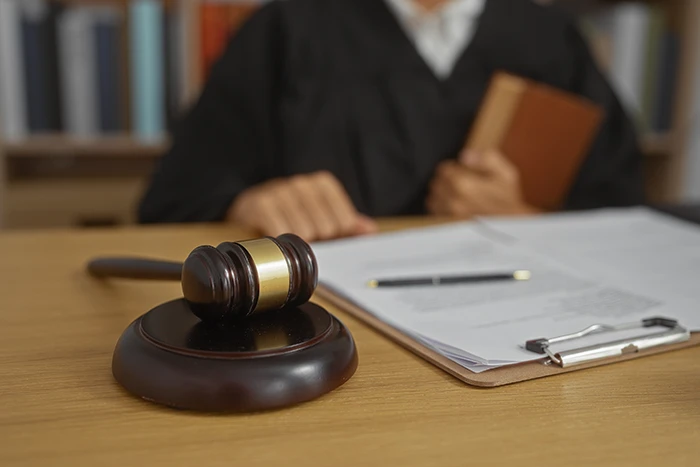In any HOA community, maintaining order and appearance is crucial. Most associations follow a clear, step-by-step way to handle issues, starting with a friendly heads-up and, if needed, moving to a formal HOA violation notice that explains what to fix and how.
What is a HOA Violation Notice?
An HOA violation notice is a written message from the association letting a homeowner know that a rule in the governing documents has been broken. It lays out what happened, what the rule says, and what the owner can do to make it right.
These notices can cover a wide range of things—unapproved exterior changes, lawns that need care, trash left out too long, or vehicles parked where they shouldn’t be. Enforcing these basics protects curb appeal, helps property values, and keeps day-to-day living predictable for neighbors.
When and Why the HOA Sends a Violation Notice
Boards and managers don’t send notices on a whim. There’s usually a consistent process. Potential issues are found during routine inspections, walk-throughs, or reports from residents.
Once something is flagged, the manager or a board member verifies it. That usually means checking the rule, confirming dates and times, and taking a few photos. The goal is to correct real problems, not to single anyone out.
Starting with a Friendly Reminder
Many communities begin with a quick courtesy reminder. It might be an email, a door tag, or a short call. The message is simple: here’s what we saw, here’s how to fix it, and here’s when to do it.
This softer touch works because it assumes good intent. People travel, storms happen, and contractors run late. If the owner fixes the issue, the matter is closed. If the problem isn’t resolved or continues to occur, the association will proceed to a formal letter.
Issuing a Formal HOA Violation Letter
When a reminder isn’t enough, the board may send a formal letter. The best letters stick to facts and make the next step easy to understand. They name the specific rule, describe what was observed, show photos if helpful, set a realistic deadline, and explain what happens if the deadline is missed.
Tone matters. The letter should be clear and respectful. It should be delivered in the way your governing documents require, whether by certified mail, email, or hand delivery. At this point, the HOA violation notice becomes the official record that the board is enforcing rules fairly and providing a path to compliance.
What Should Be in an HOA Notice of Violation?
Details vary by community, but a strong notice usually includes:
- The date, owner name, and property address
- A short description of the issue, with photos when useful
- The rule or guideline that applies, explained in plain language
- What “fixed” looks like, plus a reasonable deadline
- How to ask questions, who to contact, and how to request a hearing
- What will be the next step if the deadline passes without a fix
Clarity keeps everyone on the same page and reduces back-and-forth later.
Homeowner’s Right to a Hearing

In many states, including California, owners have the right to a hearing before fines or specific penalties are imposed. A hearing gives the owner a chance to share context, show proof of a fix, or request more time.
Best practice is to send a written hearing notice within the required time, hold the meeting with the board or a designated committee, keep simple minutes, and send a written decision afterwards. Your HOA violation notice should explain how to request the hearing and what to bring so the conversation is productive.
The Role of Fines and Penalties
If a violation continues after notice and, if requested, a hearing, the board may impose penalties as allowed by the governing documents and state law. Common options include a per-occurrence fine, daily fines for continuing issues, temporary suspension of amenities, or reimbursement assessments if the association had to correct the condition itself.
Fines should follow a published schedule and be reasonable. Written decisions should explain why a fine was imposed, how to stop additional penalties, and what steps to take to restore any suspended privileges. Clear guidance usually leads to faster fixes than heavy penalties.
What If the Homeowner Ignores the Violation Letter From the HOA?
If a formal letter goes unanswered and the problem continues, the board can escalate in measured steps. That might mean increasing fines for repeat issues, suspending certain privileges until the fix is complete, arranging limited self-help for things like emergency landscaping when the documents allow, or, as a last resort, seeking help from the association’s attorney.
Before moving to legal action, the board should confirm it followed every requirement: proper notice, a fair chance to cure, hearing rights, and solid documentation.
Avoiding Common Mistakes in the Violation Process
Good habits keep enforcement fair and drama-free. Here are some things you need to keep in mind to avoid problems:
- Be consistent. Treat similar situations the same way.
- Document well. Save letters, emails, photos, timelines, and hearing notes.
- Use authority correctly. Don’t fine unless your documents and laws allow it.
- Keep the tone respectful. Professional language gets better results.
Tips for Homeowners Responding to a Violation Letter
If you receive an HOA violation notice, take a breath and work the plan:
- Read it carefully. Note the rule cited, what needs to happen, and the deadline.
- Ask questions early. If “compliance” isn’t clear, ask for examples or a quick call.
- Fix what you can now. Quick action often prevents fines, even if bigger repairs take time.
- Request a hearing if you disagree. Bring photos, approvals, receipts, or a timeline.
- Keep records. Save the letter and your reply, and take after-photos when the fix is done.
Most issues resolve quickly when people talk to each other and follow the steps.
Best Practices for Boards and Managers

A straightforward, respectful process helps homeowners correct issues faster and reduces disputes. These practices keep your violation program fair, consistent, and defensible.
Send Timely Notices
Address violations soon after they are discovered. Prompt communication shows the rules are actively maintained and prevents small issues from becoming larger problems.
Date the notice, include when the issue was observed, and note how it was verified. If possible, add a time-stamped photo. Maintain a simple internal log to demonstrate that notices are sent within a standard timeframe following discovery.
Provide Clear Instructions
Spell out precisely what needs to be done, by when, and how to show proof. Reference the specific section of the governing documents, describe the corrective action in plain language, and give a realistic compliance deadline.
Tell the homeowner how to confirm completion. List acceptable proof, such as photos or invoices, and provide a direct contact for questions. Clear instructions reduce back-and-forth and improve the chance of first-time compliance.
Use Consistent Templates
Create standard letters for first notice, courtesy reminder, hearing notice, and fine notice. Consistent formatting keeps the tone professional and ensures the required elements are never missed.
Build fields for the rule cited, observed date, deadline, contact details, and rights to a hearing. Have management review templates annually so that they stay aligned with current policies and any legal changes.
Follow the Law
Check your process against applicable state and local requirements before sending fines or scheduling hearings. Many jurisdictions require advance notice, an opportunity to be heard, and written decisions after a hearing.
Apply rules uniformly to avoid selective enforcement. Keep homeowner information private, use neutral language, and be mindful of fair housing considerations when communicating and granting extensions.
Train Board Members
Offer a short orientation on the violation workflow, from documenting an issue to closing it out. Walk through real examples, practice hearing procedures, and clarify roles for managers and directors.
Provide quick-reference guides and scripts for common scenarios. A shared understanding of timelines, documentation standards, and communication etiquette helps the board act consistently and respectfully.
California-Specific Considerations
California’s Davis-Stirling Act guides notice and hearing procedures. The typical requirements you need to remember include a written notice before a disciplinary hearing, the owner’s right to attend and be heard, and a written decision sent within a set time after the hearing.
To ensure compliance, remember that fines must appear on a published schedule and be reasonable. Local ordinances on landscaping, noise, signage, and parking also matter, especially in Southern California. If you are in California, make sure your letters and timelines match these rules.
Importance of Communication and Fairness
The process works best when it feels fair. Owners respond better when they understand why a rule exists, what needs to change, and how much time they have.
Boards avoid disputes when they apply rules evenly, keep instructions simple, and answer questions quickly. A five-minute call or a quick photo update can do more to solve a problem than a stack of letters.
A Fair Process
A HOA violation notice is part of a simple promise: everyone knows the rules, and everyone gets the same chance to fix things when something slips. When boards follow the steps and owners engage in good faith, most issues get resolved without strain, property values stay protected, and neighbor relationships remain intact..
Related Articles:
